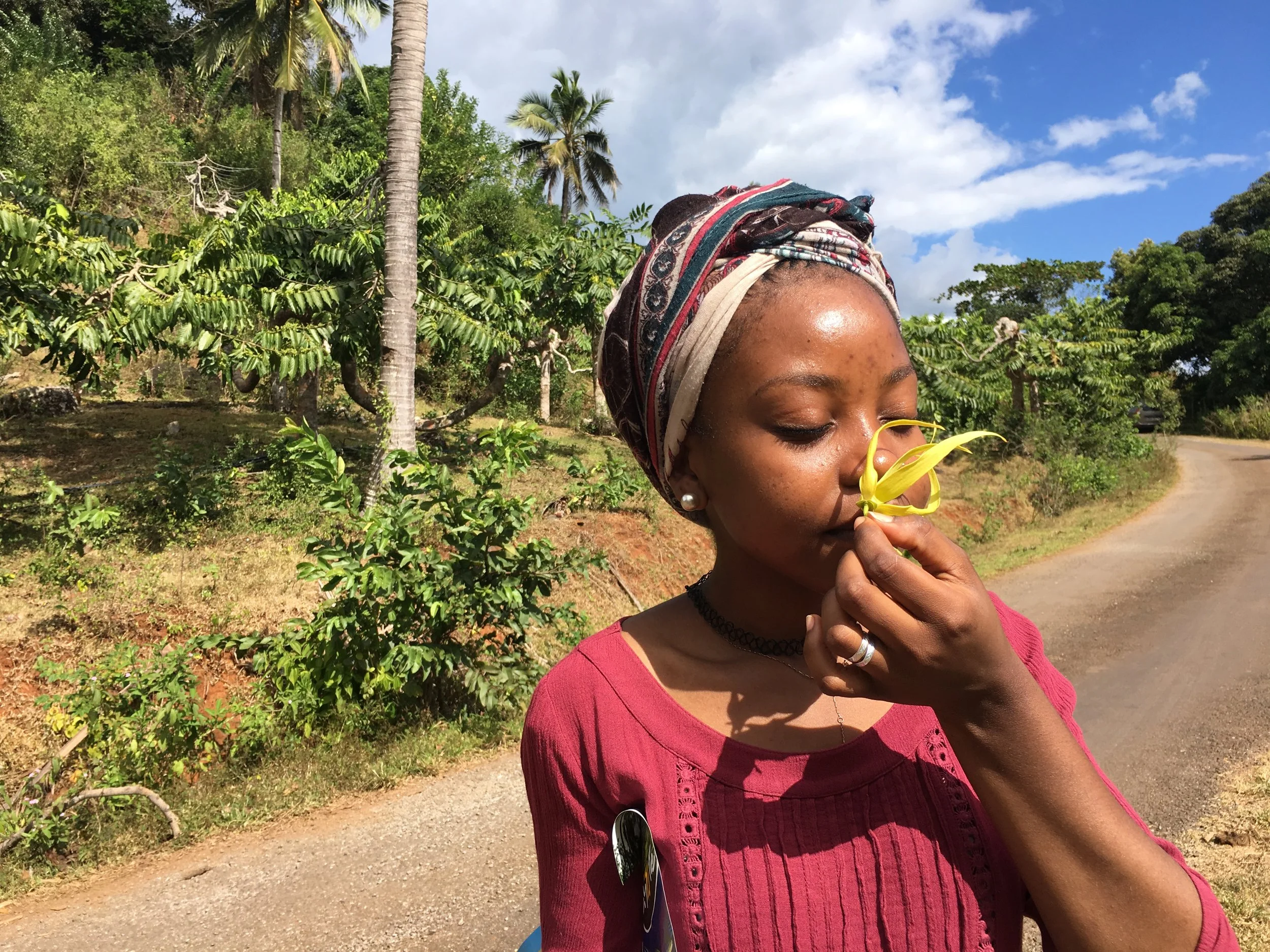L'amour Pentamerous
By Michael H. Kew
Ylang ylang—the word twice bewitches. In Mayotte, life is bound to this widely grown bloom, its name a Tagalog corruption for “flower of flowers.” Our driver, the gracious Attoumani, wished for me to see—and smell—the pride of his island’s essential oils export. We rumbled down steep, narrow red-dirt roads and pierced the cloaking tangle of green, dropping into drippy rainforests at the base of Mont Combani and its yawning valleys where ylang ylang trees lazed in the sun.
Squatting at a creek crossing was a group of women and kids washing clothes and draping them on bushes to dry. “These people are probably illegal from Comoros,” Fassianti said as we passed scowls and stares.
“Where do they live?”
“In secret.”
“Secret?”
“Their lives. Secret. They don’t want government to see them. They will get sent back to Comoros.”
“Though we’re basically in Comoros?”
“This is France.”
Soon we strolled and paused amid the heavy languor of afternoon in a place nothing like France. Neocolonialism irked me. But 98 years ago France’s Gabrielle “Coco” Chanel was onto something—clear was the sublimity of the evergreen, everyellow ylang ylang tree. In 2017 touring the plantations in central Mayotte was a dance with redolence. The fragrance was intoxicating, addictive, dreamlike, and it reminded me of my spell in Comoros 10 years prior. My souvenir then was a 30ml bottle of pure ylang ylang oil. For years I savored it. I told Fassianti that if I ever moved to Hawai'i, my yard would be full of ylang ylang trees.
“My mother grows them at her house,” she said softly, smiling. “The flowers are our favorite smell.”
Chanel, 1920. Photo: Getty Images.
Vital in haute gamme (high-end) perfumery for its floral top notes, ylang ylang oil has a fixed demand that can’t be faked by synthetics. Launched in 1921 by Chanel and her French-Russian chemist/perfumer Ernest Beaux “to be the ultimate symbol of luxurious simplicity,” the Chanel website says, “No. 5 has since become more than a fragrance. It is an olfactory heritage: an idea of femininity, a masterpiece of chic, passed from generation to generation.”
Helming her elite empire, Chanel (who lived 1883-1970) was one of the world’s richest women, due mostly to the Comorian ylang ylang flower oil she fused into Chanel No. 5. An Indonesian endemic, in the 20th century ylang ylang was sent to then-French Comoros (including Mayotte) and to then-French Madagascar. Crops flourished. Today, annual flower production is about 100 tons—Comoros produces 50 to 65 tons, Madagascar 20 to 25, Mayotte 10 to 20. Most of the oil goes to France.
Left wild, the gray-barked tree soars to 100 feet and year-round is frothed with the wavy, richly scented blooms; each have six long, narrow yellow (green when immature) petals up to four inches long. When cultivated, the trees are held to five or six feet tall, making the flowers easy to reach. The branches are trimmed and trained to grow downward into bizarre tentacle-like candelabra to place the flowers at eye level. The plantations looked like vineyards—their stunted twisting woodiness, their orderliness, their pastoral aesthetic.
Pollinated by night moths, the flowers are dawn-picked every three weeks. L’essence is stripped by fractional steam distillation—each fraction is one of four oil densities, all with unique aroma profiles. One batch can take 10 to 20 hours, starting with a copper still, 200 pounds of flowers, and 15 gallons of fresh (usually rain) water. Out comes one to two liters of oil, the first distillation being the highest grade. The process is repeated thrice more, with declining oil densities, quality, and price.
Marilyn Monroe, in 1954, when asked about what she wore to bed: “Just a few drops of Chanel No. 5.”
Monroe, 1961. Photo: Douglas Kirkland




